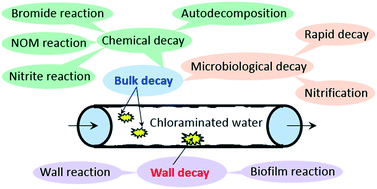Review of chloramine decay models in drinking water system
Abstract
Monochloramine, commonly referred to as chloramine, is a popular disinfectant used in drinking water distribution systems (DWDS) where high water age is encountered. Chloramine, being more stable than chlorine, is suited to such DWDS to ensure water is microbiologically safe at customer taps. It decays with time, so a certain level of chloramine residual needs to be maintained throughout the distribution system to prevent bacterial regrowth. Dependent on water quality, chloramine decay will occur through several pathways. The major pathways of chloramine decay and the kinetics involved are reviewed in this paper. Several chemical and microbiological factors including pH, temperature, hydraulic residence time, concentration/character of natural organic matter, chlorine to ammonia ratio and concentration of bacterial cells are known to have significant impact on chloramine decay. Under favourable conditions, microbiologically mediated decay can dominate over the other decay pathways by an order of magnitude. Examples include rapid chloramine decay and nitrification where a complete loss of chloramine residual occurs within a short time. From extensive research, a number of empirical and theoretical models have been developed to determine the chloramine decay. However, their application is still challenging as they generally rely on physical and chemical principles and suitable under specific conditions, although the environmental conditions throughout each DWDS vary. One way to improve the estimate of chloramine measurement, hence, better management of chloramine residual, is by developing a site-specific water quality model, incorporating the parameters representing chloramine decays in different pathways, with the unknown parameter obtained through an optimisation process.



 Please wait while we load your content...
Please wait while we load your content...